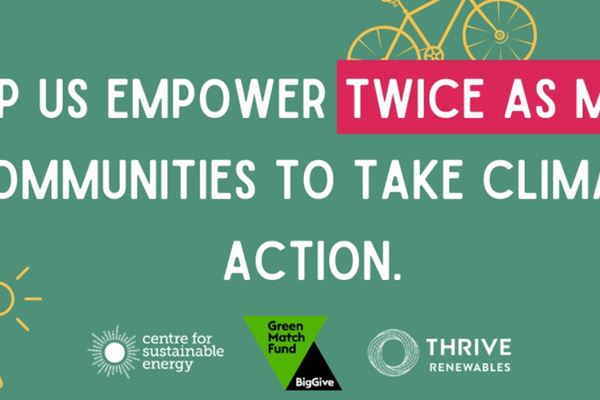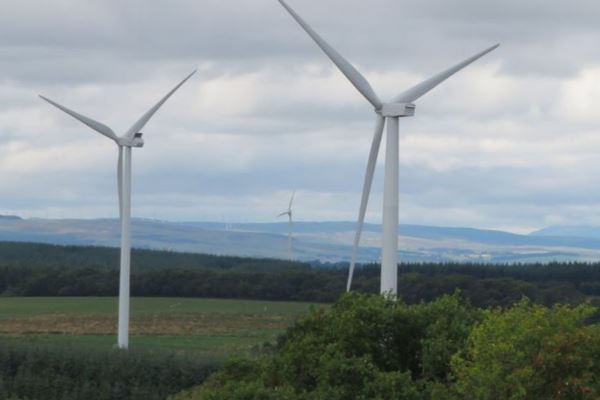The government has announced that its primary renewable support scheme – the Contracts for Difference auctions or CfDs as they are more commonly known – will take place on an annual basis from next year, a positive step forward in the roll-out of renewables in the UK.
The scheme works by providing clean energy generators with a stable, pre-agreed price for 15 years, ultimately providing the revenue certainty needed to kickstart renewable development. Wind, solar or other renewable projects can bid in the auction and the winners are those who offer to supply at the lowest price – the ‘strike price’. As well as supporting the renewables industry, these price mechanisms protect bill payers from price shocks and ensure they get the best value for money as the cost of renewables continues to decrease. In instances where prices are higher than the ‘strike price’, the generators pay back, with wind and solar farms paying £157 million to households in the final quarter of 2021 as prices spiked due to the ongoing global gas crisis.
Announcing the move, the UK’s Business and Energy Secretary Kwasi Kwarteng said “We are hitting the accelerator on domestic electricity production to boost energy security, attract private investment and create jobs in our industrial heartlands. The more clean, cheap and secure power we generate at home, the less exposed we will be to expensive gas prices set by international markets.”
Confirmation that CfD auctions will take place annually is especially important given the volatile state of the global energy market, with the transition to renewables helping to end the UK’s reliance on harmful and expensive fossil fuels. It provides renewable developers with price certainty, but are yearly auctions enough to build the new capacity required to reach net zero?
WHAT ELSE IS NEEDED?
Moving to annual CfD auctions is a major step forward, and there is huge appetite to build more projects, accelerate the transition to net zero and protect ourselves from future price shocks. But there are still obstacles to getting projects built, for example the planning policies surrounding certain clean technologies in England.
To stay in reach of the current targets, industry body RenewableUK suggests that we need to double the current onshore wind capacity to 30 GW by 2030. This would save around 6 million tonnes of carbon emissions a year, the equivalent of removing 1.1 million cars from the road annually. But to achieve this, we need to see the government overhaul the planning process so that developers can better work with local authorities and communities.
Currently, new onshore wind applications in England must demonstrate that the project is sited within an area designated for wind development and is stated so in the local plan. Analysis by Friends of the Earth in 2019 found that – of the 20 sample plans – 12 did not identify suitable areas for wind development, stating either that they are not identifying such areas or will leave it for prospective Neighbourhood Plans to identify local areas or sites. The consequence of this is that there has been little deployment of new onshore wind since the changes were introduced in 2015.
As part of the government’s CfD announcement in November, onshore wind and solar were included within a modest allocation of £10 million, despite strong public support for the technology. In fact, new polling conducted by Survation and published by RenewableUK revealed that 72% want the Government to set a long-term target for onshore wind. To overcome the planning obstacles and small CfD allocation, developers could focus instead on the repowering of existing wind farms. There is also a conversation to be had about whether the industry should be able to run without the need for CfDs at all, especially as they are only viable for larger projects. We believe that small to medium scale, localised clean energy projects are just as important. In fact, a third of onshore renewables are below 20MW, so how can we ensure these still get built?
We are working with other business models alongside the CfDs, such as corporate power purchase agreements or ‘direct wire’ arrangements where solar and wind projects are installed on site at an industrial host. Routes like ‘direct wire’ not only present businesses with a solution to managing energy costs in a volatile marketplace, but offer environmental incentives too, as they benefit from the renewable energy generated on site. Developers could also take a hybrid approach, which would require them to bid for part of their generation into the CfD and part exposure to the market, creating a ‘price hedge’ at a portfolio or project level. Establishing additional options for routes to market will ultimately accelerate the much-needed deployment of new renewable electricity generation projects.
While annual auctions will absolutely help with providing certainty around new renewable development, more must and can be done to ensure enough capacity is built for net zero, especially as the UKs electricity demand is projected to increase by almost 40% by 2035. Investing in clean technologies is the fastest, cheapest way to end our reliance on fossil fuels.



